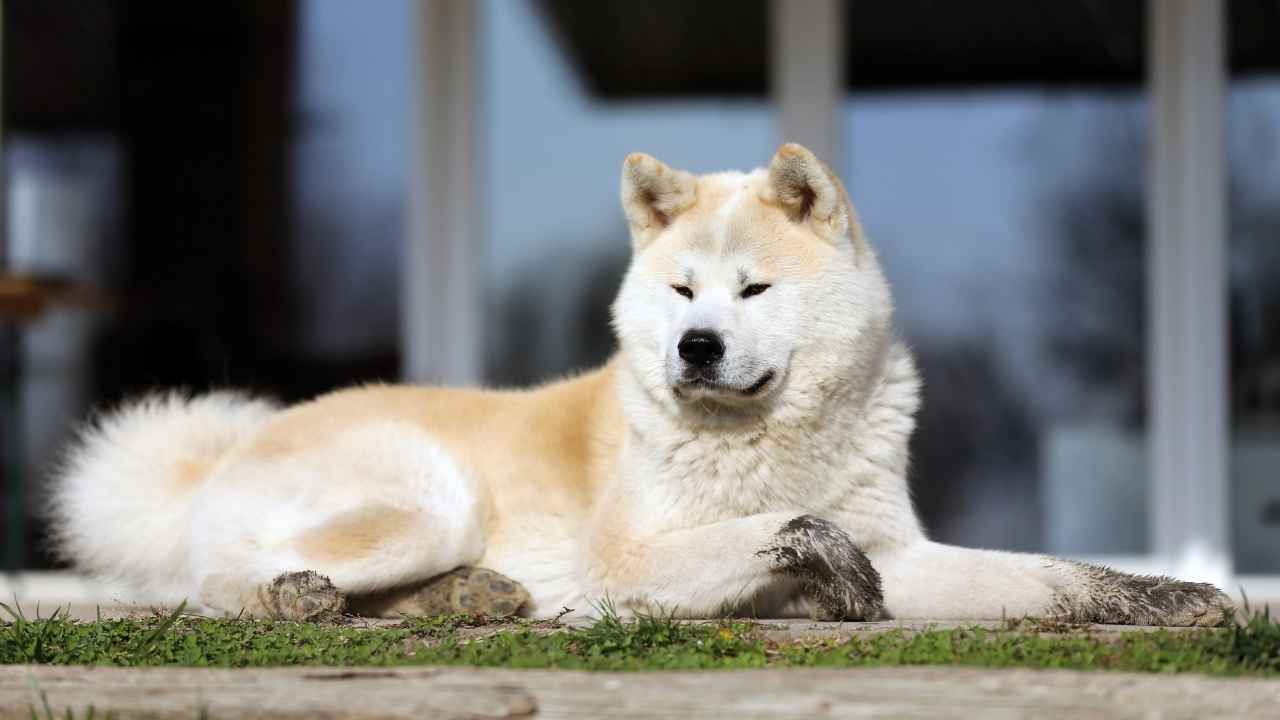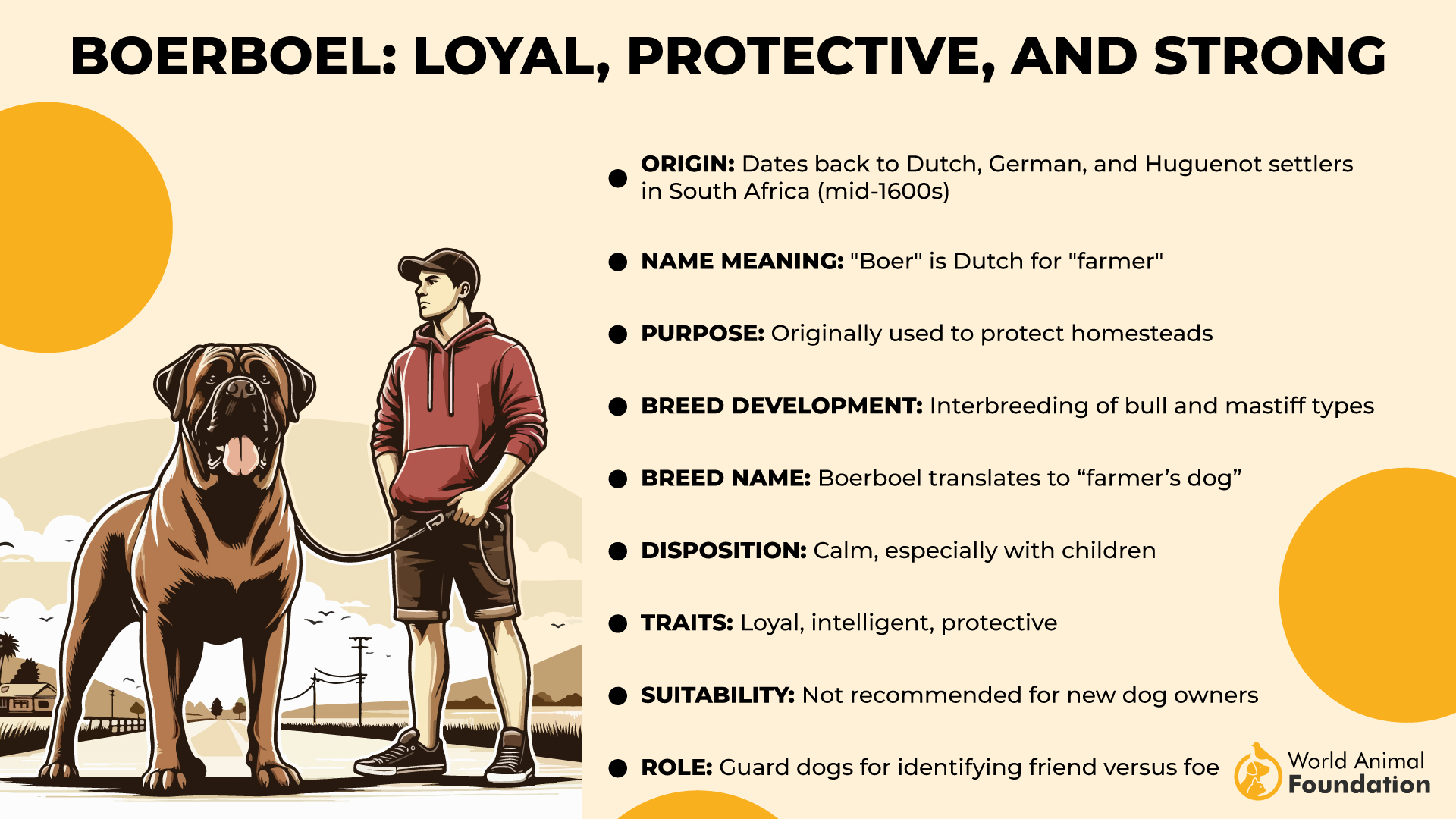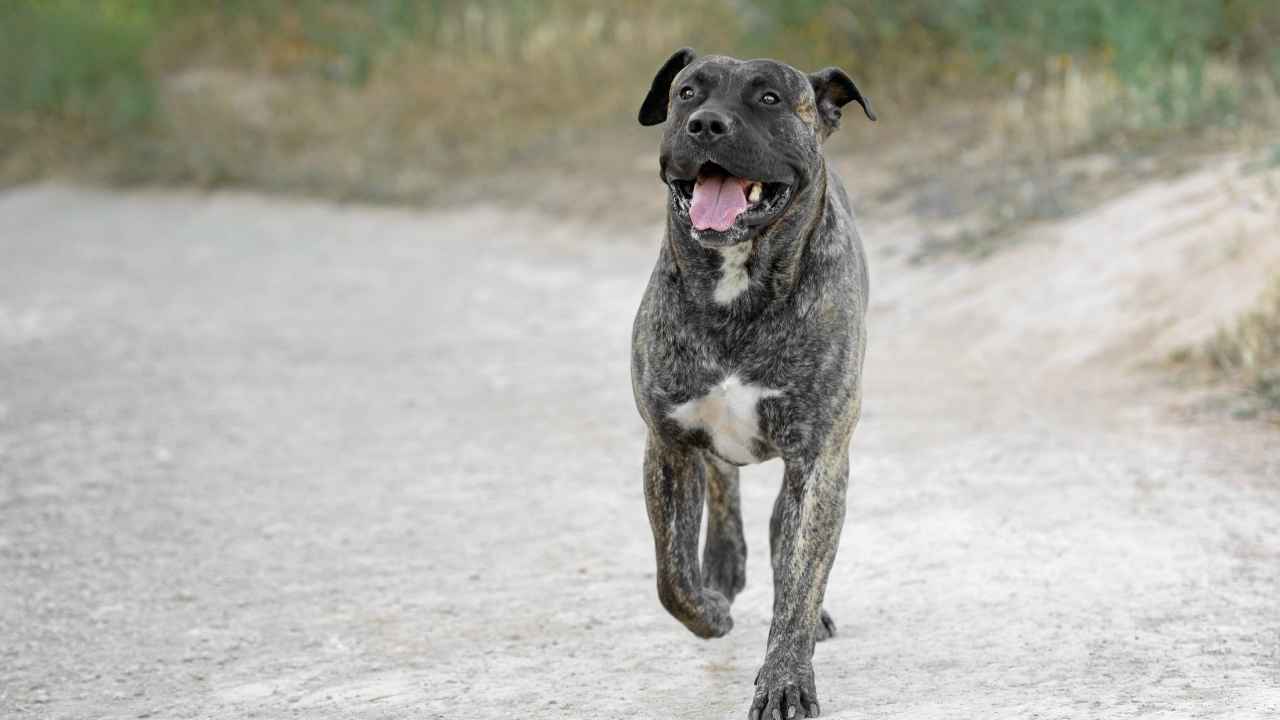Owning an extra-large dog breed can be an incredibly rewarding experience, offering companionship and loyalty like no other. However, not all XL breeds are suited for every lifestyle or environment. Some come with unique challenges that can overshadow their endearing qualities, from excessive shedding and drool to high energy levels and specific exercise needs. In this exploration of the seven worst XL dog breeds to own, we’ll delve into the difficulties these breeds may present, helping potential owners make informed decisions. Embrace the insight to discover if one of these colossal canines truly fits into your life.
Did you know that 4.5 million people in the U.S. are bitten by dogs each year, with 43 fatalities annually? Children and seniors are often the most affected.
During the pandemic, dog bite incidents spiked as people spent more time at home with their pets. While any dog can bite, some breeds are more prone to aggression due to their size, instincts, and energy levels. Traits like dominance, strength, or quick reactions—bred into dogs for roles like guarding dog fighting, or hunting—can lead to dangerous behaviors if paired with improper training or environments.
This doesn’t mean all large dogs are bad. However, their size and strength can make them more challenging. In this article, we’ll explore some of the most demanding XL dog breeds, including their aggression factors, trainability, health concerns, and family suitability.
Whether you’re considering an XL breed or just curious, this guide will help you understand the responsibilities involved. Let’s dive in!
Here’s a table highlighting the bite force (psi), size (weight in lbs), and height for each breed:
|
Akita |
350-400 |
70-130 |
24-28 |
|
Boerboel |
450-500 |
154-198 |
24-28 |
|
Cane Corso |
650-700 |
88-110 |
24-28 |
|
Gull Dong |
250-300 |
99-150 |
28-30 |
|
Kangal |
700-743 |
110-145 |
28-34 |
|
Presa Canario |
540-560 |
84-130 |
22-26 |
|
Saint Bernard |
200-220 |
119-181 |
25-35 |
Notes:
-
Height: Measured from the shoulder (withers) to the ground.
-
Bite Force (psi): Shows the strength of the breed’s jaws.
-
Weight: Represents an average range based on adult males and females.
This table makes it easy to compare each breed’s physical attributes in a user-friendly format.
Worst XL Dog Breeds
1. Akita
The Akita, a large and powerful breed from Japan, is known for its loyalty but also its independent and strong-willed nature. Akitas often weigh between 70 to 130 pounds, making them an imposing presence. Their protective instincts can be a challenge, as they are naturally wary of strangers and other pets as ruled by Britannica.
Training an Akita requires a firm, patient hand, and early socialization to curb their territorial tendencies. Inexperienced owners often struggle with their stubborn nature, which can lead to dominance issues or aggression.
While Akitas can be affectionate with family members, they are not always suitable for homes with small children or multiple pets due to their prey drive and intolerance toward rough play.
Space is another consideration. Akitas do best in large homes with yards where they can move freely. Grooming can also be demanding due to their thick double coat, which sheds heavily throughout the year. Health issues like hip dysplasia and autoimmune disorders are common in this breed, requiring attentive care.
For confident, experienced owners, an Akita can be a loyal and dignified companion. However, their size, strong temperament, and guarding instincts make them unsuitable for first-time owners or small living spaces.
2. Boerboel
The Boerboel, a massive breed from South Africa, was bred to guard farms and livestock, a role that highlights its strength and protective instincts. Adult Boerboels can weigh 150 to 200 pounds, making them one of the largest and most powerful dog breeds according to the World Boerboel Breeders Association.
While Boerboels are loyal and affectionate with their families, their natural dominance can make them difficult to handle without proper training. They require early socialization to prevent aggression toward strangers and other animals. First-time owners often find Boerboels overwhelming due to their size and strong-willed nature.
As per PetMD, This breed is not ideal for small living spaces like apartments; they need plenty of room to roam and exercise. Without proper activity, Boerboels can become bored and destructive. Additionally, their size and strength pose a risk to small children, as even unintentional rough play can cause injury.
Health concerns, including hip dysplasia and joint problems, are common in Boerboels, requiring proper nutrition and regular vet care. Their short coat is low maintenance, but their overall care demands are high.
In summary, Boerboels are loving protectors for experienced owners who can provide firm leadership and ample space. However, their size, dominance, and guarding instincts make them unsuitable for families with small kids or inexperienced pet parents.
3. Cane Corso
The Cane Corso, an Italian breed originally used for guarding and hunting, is known for its strength, intelligence, and unwavering loyalty. Weighing between 90 and 110 pounds, this muscular dog can be a formidable presence according to the Cane Corso Association of America (CCAA).
Cane Corsos have strong protective instincts, making them excellent guard dogs but also prone to aggression without proper training and socialization claimed by PDSA. Their dominant temperament requires firm, confident leadership, which can be challenging for inexperienced owners. Early socialization is essential to ensure they don’t become overly territorial or suspicious of strangers and other pets.
This breed is high-energy and needs plenty of daily exercise to stay physically and mentally balanced. Without it, they can become destructive or develop behavioral issues. Additionally, Cane Corsos are prone to health problems such as hip dysplasia and bloat, which can add to the challenges of caring for them.
While Cane Corsos can be gentle with their families, their sheer size and strength make them a poor match for homes with small children or small living spaces. They thrive best with experienced owners who can provide structure, training, and plenty of activity.
In short, the Cane Corso is a loyal and capable protector but demands a high level of commitment. Their energy, size, and guarding instincts make them unsuitable for inexperienced pet parents or those looking for a low-maintenance companion.
4. Gull Dong

The Gull Dong is a rare, powerful breed originating from Pakistan, bred for strength, speed, and working purposes. These dogs are highly energetic, intelligent, and muscular, typically weighing between 90 to 140 pounds. While their loyalty is unmatched, their traits pose significant challenges, especially for inexperienced pet owners.
One of the main issues with the Gull Dong is its strong-willed and dominant nature. This breed is notoriously difficult to train, requiring an experienced and confident handler who can establish clear leadership. Without proper training and early socialization, Gull Dongs can develop aggression toward strangers, other animals, or even family members who don’t command respect.
Their prey drive is high, making them unsuitable for homes with small pets or young children. They require firm boundaries and consistent training to manage their impulses. Additionally, Gull Dongs are highly energetic and need plenty of daily exercise to stay happy and healthy. A fenced yard and space to roam are essential, meaning they don’t adapt well to small living spaces like apartments.
Health-wise, Gull Dongs are relatively hardy but may be prone to issues like hip dysplasia due to their size and build. Regular vet checkups and a proper diet are key to their well-being.
In short, the Gull Dong can be a loyal and protective companion for an experienced owner who understands strong breeds. However, their size, energy, and potential for aggression make them unsuitable for seniors, families with small children, or first-time pet owners.
5. Kangal
The Kangal, a majestic and powerful breed from Turkey, is renowned for its role as a livestock guardian. These dogs are calm, confident, and fiercely protective, often weighing between 90 and 150 pounds. While they are known for their loyalty, their size and instincts come with significant challenges for pet owners.
Kangals have a natural guarding temperament, which makes them wary of strangers and quick to react if they sense a threat claimed by KCDA. This protective nature can translate into aggression if they aren’t properly trained and socialized from an early age. For inexperienced owners, managing this breed’s instincts can be overwhelming.
Training a Kangal requires consistency, patience, and a firm but gentle approach. They are intelligent dogs but have an independent streak, meaning they won’t always obey commands unless they respect their handler. Early socialization is key to ensuring they behave well in new situations or around other animals.
Due to their size and energy levels, Kangals need plenty of space to roam. They are not suited to apartment living or small yards. Regular exercise and mental stimulation are essential to prevent boredom, which can lead to destructive behavior.
Health issues in Kangals include hip dysplasia and joint problems, common in large breeds. Owners must monitor their weight and provide a nutritious diet to support their joints and overall health.
Overall, the Kangal is a loyal and hardworking dog best suited to experienced owners with large properties. While they can be gentle with their families, their size, energy, and guarding instincts make them a poor fit for seniors, small spaces, or first-time dog owners.
6. Presa Canario
The Presa Canario, also known as the Canary Mastiff, is a powerful and imposing breed originating from the Canary Islands. Bred for guarding and working, they can weigh between 85 to 130 pounds and have a muscular, intimidating build. While incredibly loyal and protective, they come with challenges that make them a tough breed for many owners.
One of the main concerns with Presa Canarios is their strong guarding instincts and dominant temperament. They are naturally wary of strangers, and without proper early socialization, this can turn into aggression. Training is crucial, but these dogs require a firm, confident owner who can establish clear leadership. First-time owners or those with limited experience may struggle to handle this breed’s strong-willed nature.
Their size and power also mean that they are difficult to control if they are not properly trained. Combine this with their high prey drive, and it’s clear why they are not ideal for homes with small pets or young children. Presa Canarios need plenty of space, making them unsuitable for apartments or small living areas. They thrive in homes with large, secure yards where they can roam and exercise.
In terms of health, Presa Canarios are prone to hip dysplasia and other joint issues, common in large breeds. They also require regular exercise to manage their energy and prevent boredom, which can lead to destructive behaviors.
In summary, while Presa Canarios can be loving and loyal to experienced owners, their size, dominance, and guarding nature make them a poor fit for seniors, small homes, or families with young kids. They are best suited for confident owners willing to invest time in training and socialization.
7. Saint Bernard
The Saint Bernard is a giant, lovable breed best known for its history as a rescue dog in the Swiss Alps. Weighing between 120 and 180 pounds, these gentle giants are affectionate and calm but come with challenges that potential owners should consider.
While Saint Bernards are generally friendly and good-natured, their massive size can make them difficult to manage, especially for first-time owners or families with small children. A playful Saint Bernard may unintentionally knock over a child or senior. Additionally, their large frame makes them unsuited for small living spaces like apartments—they need room to stretch and move comfortably.
Training a Saint Bernard is necessary, but their easygoing nature can sometimes lead to stubbornness. Early training and socialization are essential to teach them good manners, as controlling an adult Saint Bernard can be challenging due to their size and strength.
Health is a significant concern for this breed. Saint Bernards are prone to hip dysplasia, heart issues, and bloat, which require attentive care and can result in expensive vet bills. They also have a shorter lifespan compared to smaller breeds, living around 8–10 years. Another challenge is their shedding and drooling—Saint Bernards shed year-round and often leave trails of slobber wherever they go.
Despite these challenges, Saint Bernards are affectionate, patient, and loyal, making them great companions for experienced families with plenty of space and time for care. However, their size, grooming needs, and health concerns mean they may not be ideal for seniors, first-time owners, or small homes.
Conclusion
While any dog can bite, it’s important to remember that aggression is not solely determined by breed but also by how a dog is raised, trained, and socialized. Pit Bulls, Rottweilers, Doberman Pinschers, and other so-called dangerous dog breeds often carry a bad reputation due to fatal dog attacks and their strong bite force. However, it’s not necessarily the breed itself that is problematic—it’s the environment, care, and training that shape these furry companions.
Breeds like the German Shepherd, Siberian Husky, Alaskan Malamute, and Chow Chow often fall under scrutiny because of their strength, muscle, and guarding qualities. Yet, these dogs can become loyal, well-mannered, and well-behaved pets with proper leadership and socialization. Research shows that even dogs from small size breeds can exhibit aggression. Whether a working dog or a pup with a high psi bite force, all dogs require responsible pet ownership to thrive.
As pet parents, we have a responsibility to determine the needs of our dogs—be it exercise, discipline, or affection. Whether it’s puppies or adult dogs, good behavior doesn’t happen by accident. It requires time, consistency, and sometimes the guidance of a veterinarian or professional trainer. Breeders and owners alike play a role in raising dogs that are socialized, confident, and safe for humans and other animals, such as your family cat.
While certain dogs tend to stand out in comparisons, like huskies and rottweilers, this doesn’t mean they are inherently “dangerous.” It’s vital to avoid stereotypes and understand that various breeds, whether strong or small, can be loving companions when given the right care. Responsible pet ownership, early socialization, and training can turn any dog into a loyal and loving companion while minimizing risks of trouble or aggression.
In the end, dogs are a reflection of their environment, care, and leadership. Whether they’re working dogs bred for protection or family pets, every dog deserves the chance to be a happy, balanced, and cherished member of our homes. It’s up to us to provide that foundation, ensuring our furry companions live up to their potential and break free from the stereotypes that label them as dangerous dogs.
When considering the ownership of extra-large dog breeds, it’s essential to weigh the challenges alongside their impressive qualities. Breeds often labeled as challenging might include those with high exercise demands, significant space requirements, or predispositions to health issues. Their size can lead to higher costs for food, veterinary care, and accommodation, as well as practical handling difficulties. However, with the right commitment, knowledge, and environment, these breeds can become loyal, loving companions. It’s crucial for potential owners to conduct thorough research and assess their ability to meet the needs of such dogs to ensure a harmonious and responsible ownership experience.








